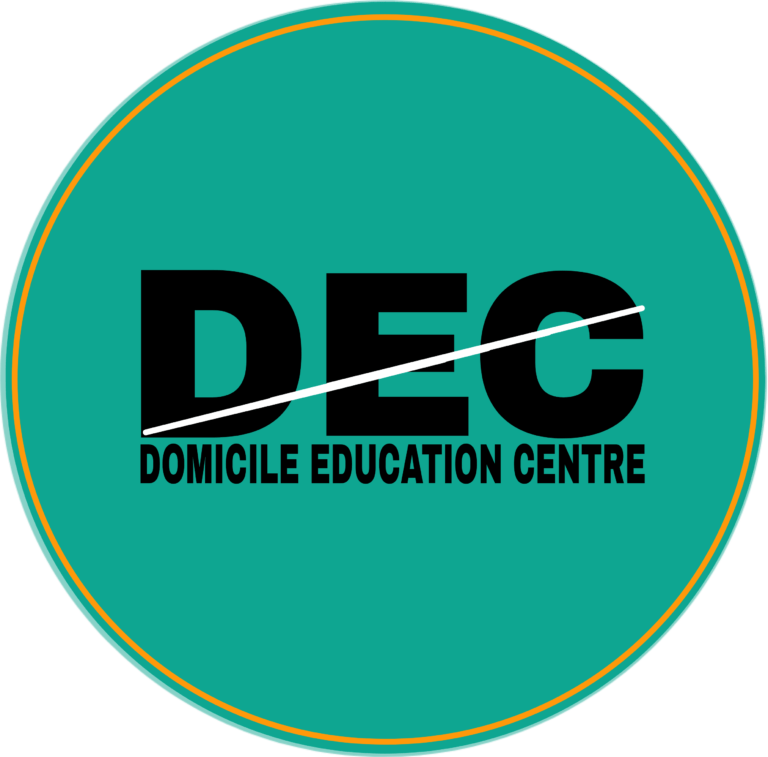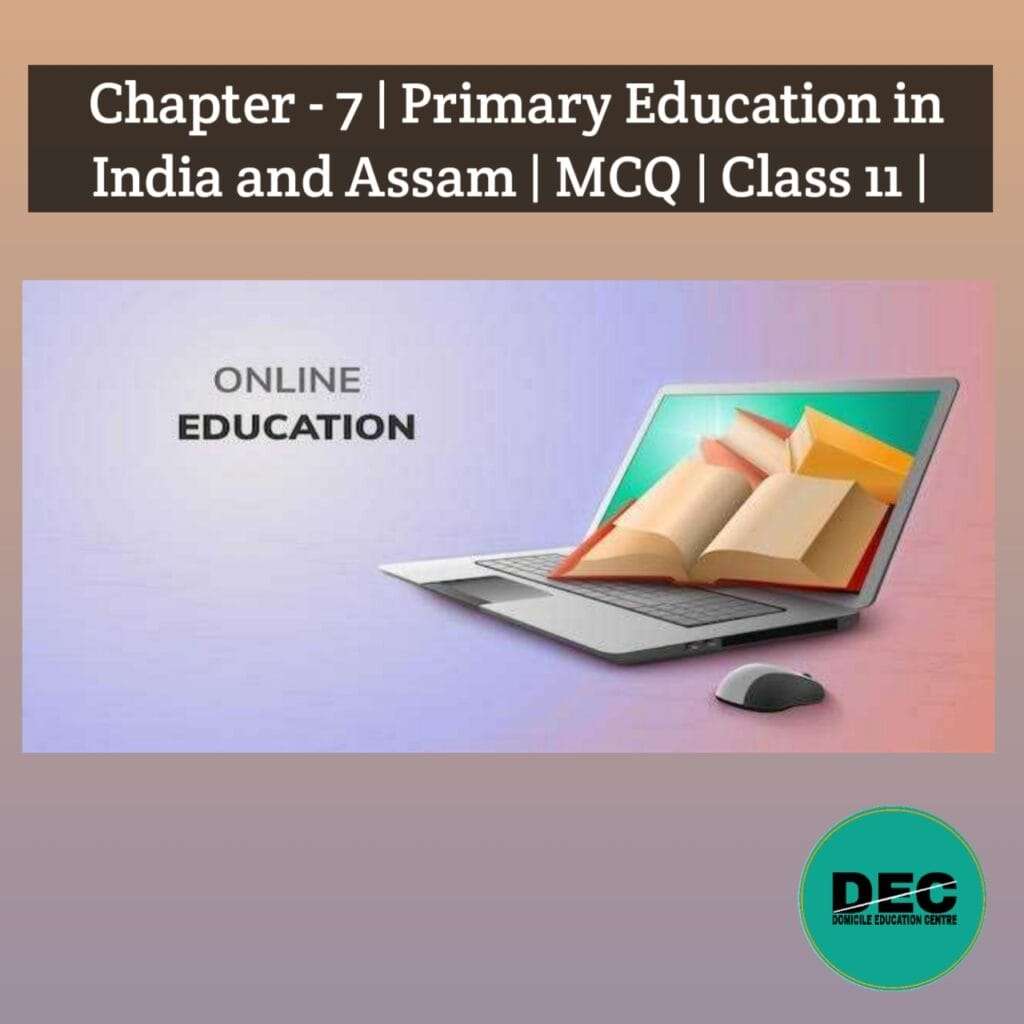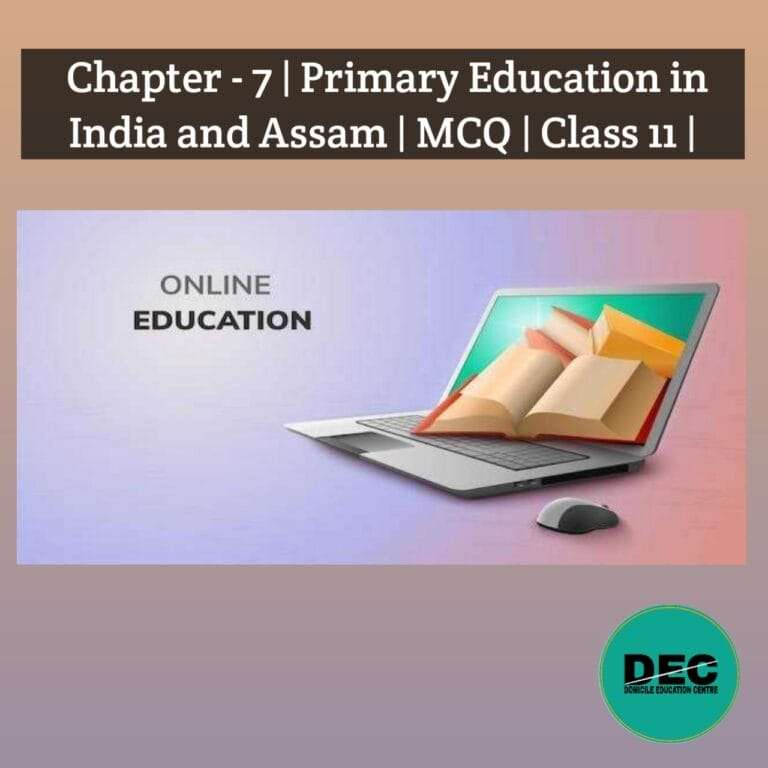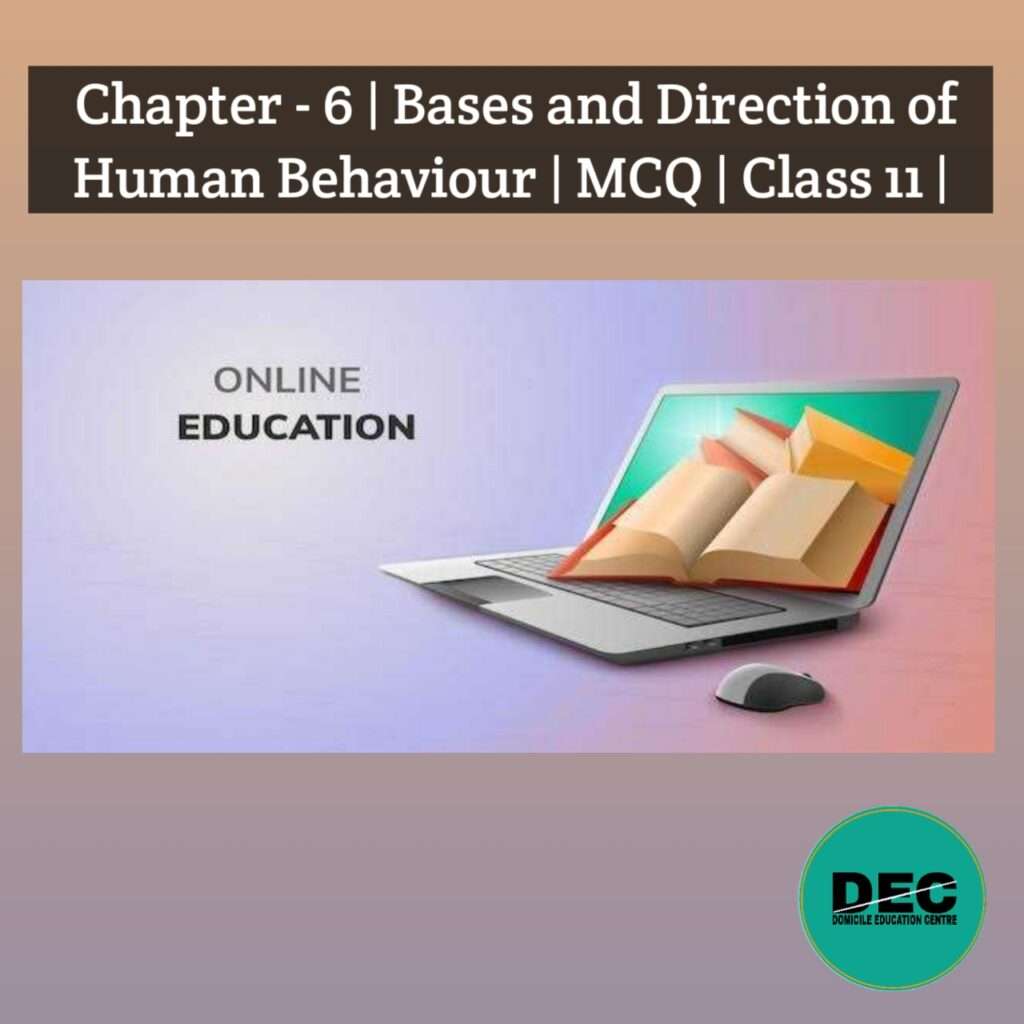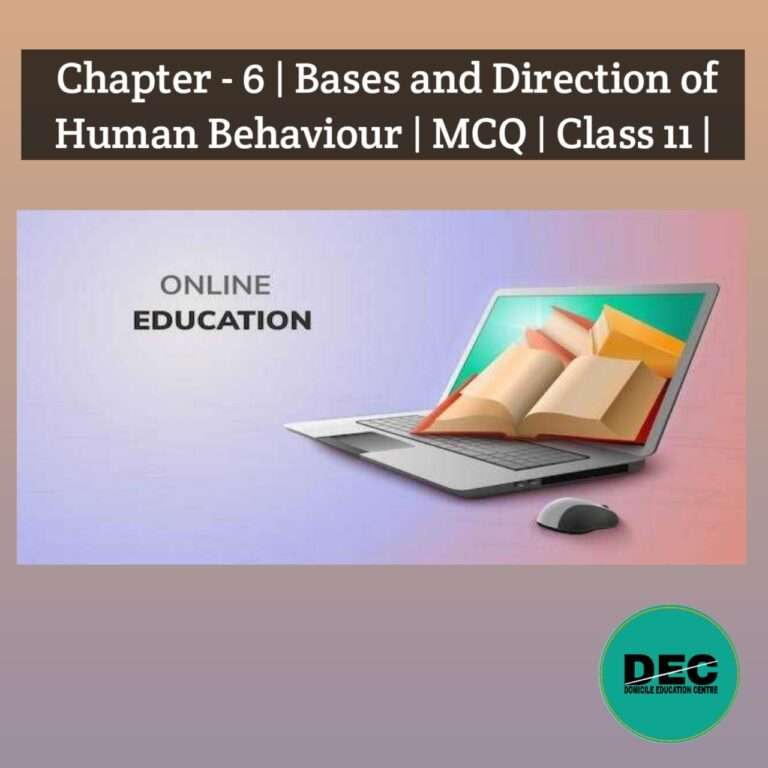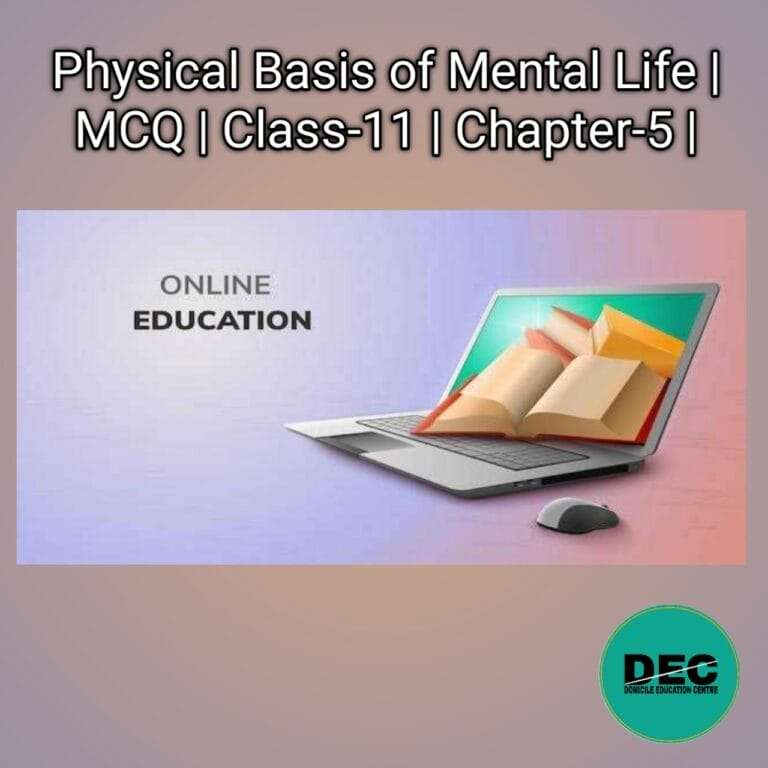Chapter-7 | Primary Education in India and Assam | MCQ | Class-11 |
Here You will get Chapter-7 Primary Education in India and Assam MCQ as per New Education Policy 2020 under Jurisdiction of Assam State School Education Board.
Chapter-7
Primary Education in India and Assam
1. Who took first survey to know the conditions of the indigenous educational institutions during the British rule in India?
A. Mount Stuart Elphinstone
B. Sir Thomas Munro
C. William Bentinck
D. The Local Pundits
Ans: Option B. Sir Thomas Munro
2. In which was first made survey took place to know the conditions of the indigenous educational institutions during the British rule in India?
A. 1835
B. 1823
C. 1822
D. 1829
Ans: Option C. 1822
3. Who was Governor of the Madras Presidency during British Rule in 1822?
A. William Bentinck
B. Mount Stuart Elphinstone
C. Sir Thomas Munro
D. The Saints
Ans: Option C. Sir Thomas Munro
4. Who was the Governor of Bombay in the year 1829 an enquiry into the education of the Bombay Presidency?
A. Sir Thomas Munro
B. Mount Stuart Elphinstone
C. William Bentinck
D. William Adam
Ans: Option B. Mount Stuart Elphinstone
5. Indigenous Educational Institutions were established by-
A. The Local Pandits
B. The Saints
C. The Adhyapaks
D. All of the above
Ans: Option D. All of the above
6. Indigenous Educational Institutions were categorised into-
A. 3
B. 4
C. 5
D. 6
Ans: Option B. 4
7. The Gurukul System of Indigenous Educational Institutions focussed on the knowledge of ___________.
A. Vedic Mathematics
B. Religious texts
C. Vedic Literature
D. Scientific Theorems
Ans: Option C. Vedic Literature
8. “Prepare fire for Yajna-Kund” used in Ashram related to which of the following indigenous Educational Institutions-
A. Gurukul
B. Pathsala
C. Tols
D. Satras
Ans: Option A. Gurukul
9. ‘Begging of Alms’ was meant to ________.
A. Teach the students humility and Politeness.
B. Signified mental development and rearing up.
C. Make the students self-dependent.
D. None of the above
Ans: Option A. Teach the students humility and Politeness.
11. ‘Preparing of fire for the Yajna’ was meant to __________.
A. Teach the students humility and politeness.
B. Make the students self-dependent.
C. Used to give religious education.
D. Religious duty and responsibility.
Ans: Option B. Make the students self-dependent.
11. Pathsala is a _____________.
A. Town
B. Village
C. Institution
D. Mandir or Temple
Ans: Option C. Institution
12. The method of instruction of Pathsala was _________.
A. Verbal
B. Sanskrit
C. Individualistic
D. Arabic
Ans: Option C. Individualistic
13. The method of instruction of Gurukul was __________.
A. Arabic
B. Individualistic
C. Sanskrit
D. Verbal
Ans: Option D. Verbal
14. The medium of instruction of Pathsala was ________.
A. Urdu
B. Verbal
C. Sanskrit
D. Individualistic
Ans: Option C. Sanskrit
